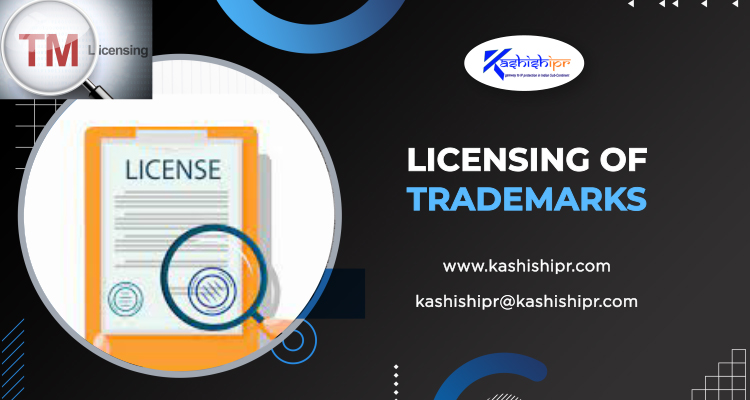
A trademark is an important business asset that offers protection to a brand. Businesses own valuable trademarks, which, once registered, can be licensed out. The rights that flow from a trademark can be licensed to others to receive royalties for commercialization. Licensing your trademark can be a beneficial business strategy that can not only strengthen the brand but also allow for expansion into new markets. Licensing involves permitted use by a person on his goods or services of a trademark belonging to a proprietor, provided the proprietor exercises the quality control and authorizes the application of the trademark on such goods and services.
What is Trademark Licensing?
Trademark Licensing refers to the process where the owner of a trademark (the licensor) gives another person (the licensee) the right to use the trademark. Common examples of trademark licensing include merchandising partnerships, franchising, or beverage brands such as Coca-Cola allowing independent bottlers of their soft drinks to label the finished product with the COCA-COLA trademark.
Advantages of Trademark Licensing
There are many advantages of licensing a trademark, such as:
- Access to new markets: In the case of marketing and distributing channels, allowing licensees the right to use one’s trademark can help to expand the business;
- Increase in consumer recognition;
- Distribution of workload; and
- Partnerships: Trademark licensing can lead to benefits for the business life and functioning of the parties involved.
Types of Trademark Licenses
- Exclusive License
It grants the rights to commercial use of the trademark solely to the licensee. In effect, it also excludes the licensor from using it. The licensor receives a sum for licensing, and the licensee receives any future profits or incurs losses arising from commercialization.
Limitations can be placed on exclusive licenses so that the licensee is restricted to use the mark within a specific class of product or geographical area.
- Sole License
A sole license is an adaptation of an exclusive license where both the licensor and licensee can use the trademark. However, the licensor is not permitted to license the trademark to another third party.
- Non-Exclusive License
As the name suggests, a licensor can grant a non-exclusive license to multiple licensees.
Drafting a Trademark Licensing Agreement
Many famous trademarks, such as ‘Harley- Davidson,’ ‘Pizza Hut,’ ‘Baskin Robbins,’ are represented by agencies who seek out appropriate licensees. After the parties make contact, they sort to discuss the basic terms of the agreement. It is fairly common for owners of well-known trademarks to dictate the terms and furnish the agreements for merchandise licensing. Often these terms are on a “take it or leave it” basis; if the licensee doesn’t agree, the trademark owner will go elsewhere. In other cases, a licensee will furnish the trademark license agreement. Usually, before entering into an agreement, the licensee and the licensor work out all the business terms. Even after the terms are agreed upon and, the license is furnished, the parties can make additional changes. Payment of royalties depends on industry trends. To use a trademark on merchandise, such as clothing, a licensee must pay royalties ranging from 2% to 10% of net sales. A trademark owner may accept a lump-sum payment for a one-time license, for instance, the use of the image on 100,000 T-shirts at a sporting event.
Although the terms of every license are different and may be freely negotiated between the licensor and licensee, all licenses must at least include the following provisions to be valid:
- The legal names of the licensor and licensee;
- Identification of the trademark(s) that are the subject of the licensing agreement;
- Identification of the products/services with which the licensed mark may be used;
- The geographic territory in which the licensee may operate and sell his products/services;
- Quality control provisions that set forth clear standards as to the nature and quality of the licensed products/services;
- Whether the license is exclusive or non-exclusive;
- The duration of the license;
- The amount of any royalty payments or other compensation due to the licensor and when those payments are to be made;
- The responsibilities of both parties upon the termination or expiration of the license; and
- The consequences of breaching the license and the period in which the breach must be remedied.
From a licensor’s perspective, the quality control provisions of a trademark license are the most important. The licensor must continuously make sure that the licensee’s products/services meet a certain standard, or else the value of the licensor’s trademark could be harmed. Furthermore, licensors often require that any advertising and promotional materials created by their licensees be approved before public dissemination. The failure of a licensor to demand and enforce strict quality control can leave the licensor’s trademark vulnerable to attack by third parties, and the trademark may ultimately be deemed to have been abandoned. Unlike other forms of Intellectual Property (IP),Trademark Rights in most countries can arise from and can be destroyed by the use that is made of the trademark. A trademark owner who allows anyone else to use his trademark must therefore take special care to ensure that his trademark rights are not diminished by the arrangement. In particular, the trademark owner should ensure that the licensing arrangement does not jeopardize:
- The value of the trademark;
- The security of the Trademark Registration; and
- His exclusive ownership of the trademark rights.
Therefore, through strategic trademark licensing arrangements, brand owners can not only increase brand awareness but also generate significant income. Today, the majority of successful, well-known brands rely on the licensing model for their success. However, at the same time, a well-structured licensing agreement is important to maximize the value of a trademark while safeguarding against possible consequences and risks. Trademark licenses, if carried out with proper care and caution, can ultimately enhance brand equity and produce revenues for a brand owner. ✅ For more visit: https://www.kashishipr.com/
No comments:
Post a Comment